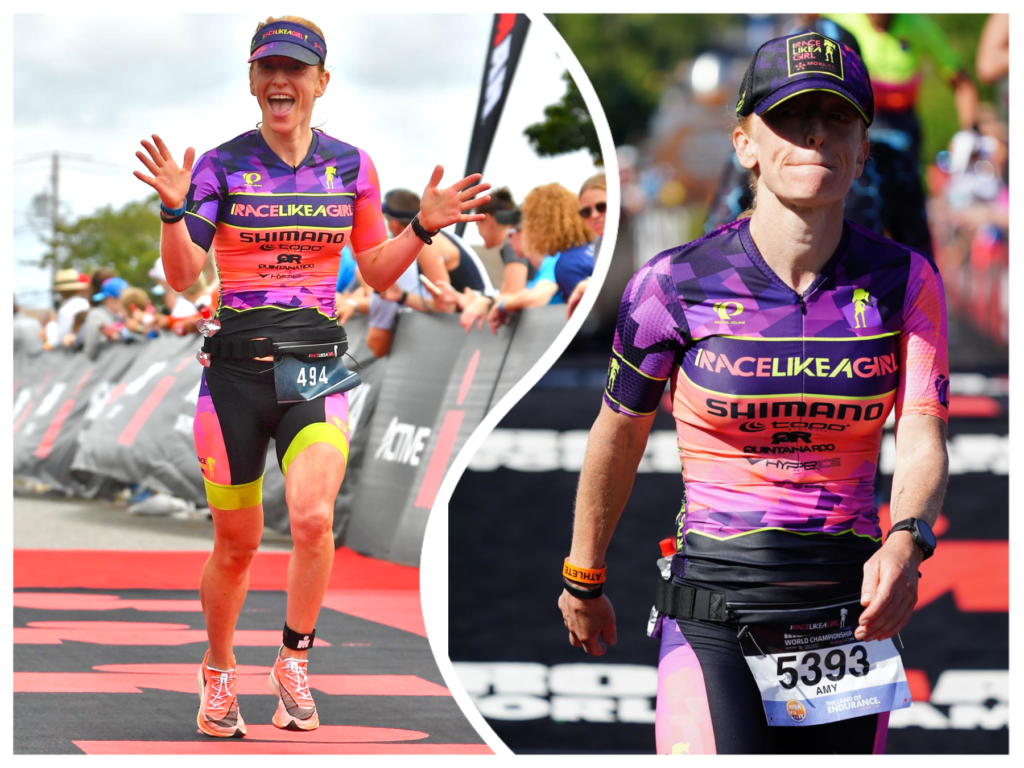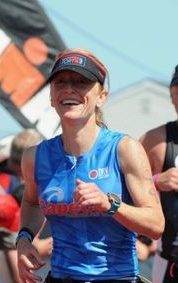The Season That Wasn’t

The date was January 9, 2022. That week, my Training Peaks had a note from my coach “Start Boston Build.” That was the start to the season that wasn’t.
But then, a seemingly small fender bender turned into a massive ordeal. I ended up with a stress fracture in my talar head (a bone on the top of the foot near the ankle) and that injury lasted 7 months, derailing my race season. More than that, it derailed my mental fortitude.
There were many ups and downs over those 7 months. At times, my injury consumed me as I tried to find answers and navigate the emotional roller coaster of a complicated stress fracture.
What I Learned From The Season That Wasn’t:
TRUST YOUR GUT.
If something doesn’t feel right, it probably isn’t. Initially, my injury was misdiagnosed and then, even when I got an MRI, I was told I could run on it. But it didn’t feel right. I pushed for a second MRI, which showed the injury had gotten worse. Had I not listened to my body, I could have ended up with a complete fracture.
DON’T TRUST YOUR GUT.
I know, I know. I just told you TO trust your gut. But on the flip side, after I got a *mostly* clean MRI and was returning to run, things didn’t feel right and my ankle got sore. I stopped running again and was in a dark place because I thought I re-injured it. Getting another MRI wasn’t easy but I pushed for it. The MRI revealed that my foot/ankle was healed. What I was feeling was ligament inflammation not a bone fracture. My point is that your mind is VERY powerful and sometimes it can lie to you.
FOMO IS REAL, DEAL WITH IT.
As I watched my races slip by (Boston Marathon, Chattanooga 70.3, Musselman 70.3), the green eyed monster reared its ugly head. The first race I missed (Boston) I handled okay, but as my time on the injured list wore on, I got angrier and more jealous of those who were healthy. They were doing what I wanted to do. It took a lot of self-talk to get me out of that hole. I realized that my time would come, which leads me to the next thing I learned.
IT’S OKAY TO GRIEVE, BUT THEN PICK YOURSELF UP AND REFOCUS.
Every time I would hit a low, I would let myself feel those dark emotions. I would then woman up, and focus on what I could control. It was important for me to let those emotions out, but I had to keep looking forward and focus on my recovery and HOPE.
FIND SUPPORT.
I turned to anyone and everyone who would listen and help me. I needed to talk things out and find people who had dealt with injuries and fractures. From my husband to my friends to my doctor to my PT. It took a village to prop me up. Even facebook groups of those suffering from injuries was a big help. Surrounding myself with people who understood was key for my mental health.
THE INTERNET IS NOT YOUR FRIEND, BUT A TOOL.
If you look at my browsing history, the first four pages of links to “talar head stress fracture” articles have all been clicked on. I am not proud of this. I constantly went deep into google, which often showed “worst case scenario” injuries and outcomes., This made my brain spiral into “what if” scenarios. Remember, google searching can be a good tool, but keep it in perspective.
RECOVERY IS YOUR SPORT.
I learned this phrase early on from the book “Rebound,” by Cindy Kuzma and Carrie Jackson. If I couldn’t swim, bike, and run the way I wanted to, I would throw myself into recovery. I did everything that the doctors asked of me. From supplements to bone stimulators to backing off training. The only goal was to get better, so I found other ways to stay busy. We traveled a little more because I didn’t have to worry about training. I got more sleep because I didn’t have to wake up early to train. Focusing on work was a benefit as well as learning to redirect my energy into other areas, including recovery.
PATIENCE, GRASSHOPPER.
And the hardest lesson of all. Patience. Everyone said, “You WILL get better, but it will take time.” Not knowing WHEN I would be better was the hardest part of it all. Admittedly, I am an “I want it now” kind of person. What I learned over the course of 7 months, was let go a little bit and trust the process.
As I write this, my stress fracture is healed and I am on a SLOW return to a run program. I can swim and bike normally as well. Lining up at the start of the Boston Marathon in 2023 has me excited. It will be my first big race back. You can be sure I will have an attitude of gratitude for every mile I am able to run.


Amy Woods is a triathlete, Level 1 USAT Coach and fitness instructor who lives in Cape Cod, MA, with her husband, two teenage children, a poodle, and an old gray cat. She was a classroom teacher for 22 years and recently left the classroom to focus more on her family and her passion for all things fitness.
Amy teaches indoor cycling and strength classes in-person and virtually. She recently launched her own app (Amy Woods Fitness) and an on-demand video workout library, featuring everything from cycling and strength to yoga and barre. It’s a one-stop shop for fitness and includes other local instructors.
When Amy is not in the studio, you can probably find her swimming, biking, and running. She is an Ironman All World Athlete, a Boston Marathon qualifier, and part of the I Race Like A Girl team and her local Cape Cod Triathlon team.









